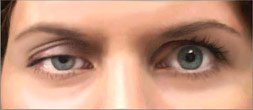


Myasthenia Gravis Overview
As given in the Merck Manual:Myasthenia gravis involves episodic muscle weakness and easy fatigability caused by autoantibody- and cell-mediated destruction of acetylcholine receptors. It is more common among young women but may occur at any age. Symptoms worsen with muscle activity and lessen with rest.
In simpler words Myasthenia gravis is an autoimmune neuromuscular (involving both muscles as well as nerves) disease, which leads to progressive muscle weakness and fatigability (patients get easily tired).
The symptoms of Myasthenia gravis characteristically worsen on exertion/Physical activity and are better by rest. Myasthenia gravis occurs in all ethnic groups and both genders. It most commonly affects young adult women (under 40) and older men (over 60), but it can occur at any age.
It usually affects muscles such as those that control eye and eyelid movement, facial expression, chewing, talking, and swallowing are often, but not always, involved in the disorder. The muscles that control breathing and neck and limb movements may also be affected.
In simpler words Myasthenia gravis is an autoimmune neuromuscular (involving both muscles as well as nerves) disease, which leads to progressive muscle weakness and fatigability (patients get easily tired).
The symptoms of Myasthenia gravis characteristically worsen on exertion/Physical activity and are better by rest. Myasthenia gravis occurs in all ethnic groups and both genders. It most commonly affects young adult women (under 40) and older men (over 60), but it can occur at any age.
It usually affects muscles such as those that control eye and eyelid movement, facial expression, chewing, talking, and swallowing are often, but not always, involved in the disorder. The muscles that control breathing and neck and limb movements may also be affected.
What are causes of Myasthenia Gravis?
Top
It is caused by a faulty immune system response against the nicotinic acetylcholine receptors (AChR). These receptors are founding between the junction of the muscle and the nervous system, they act by sending signals (by producing acetylcholine) from the nerves to the muscle. This transmission by the nerve cells acts on their controlling muscle thus generating muscle contraction.
The body produces antibodies that attack these AChR receptors, preventing signals from reaching the muscles. As these antibodies areproduced by the body own defective immune system Myasthenia gravis is an autoimmune disorder.
The body produces antibodies that attack these AChR receptors, preventing signals from reaching the muscles. As these antibodies areproduced by the body own defective immune system Myasthenia gravis is an autoimmune disorder.
What are the sign and symptoms of Myasthenia Gravis?
Top
 The most common symptom of Myasthenia gravis is muscular weakness. The degree of muscle weakness involved in myasthenia gravis varies greatly among patients, ranging from a localized form, limited to eye muscles (ocular myasthenia), to a severe or generalized form in which many muscles - sometimes including those that control breathing - are affected.
The most common symptom of Myasthenia gravis is muscular weakness. The degree of muscle weakness involved in myasthenia gravis varies greatly among patients, ranging from a localized form, limited to eye muscles (ocular myasthenia), to a severe or generalized form in which many muscles - sometimes including those that control breathing - are affected.
Difficulties in swallowing and slurred speech are usually the first signs of the disease.
Eye: Ocular muscles are affected initially in 40% of the cases and eventually 85% of the people will have ocular symptoms like Ptosis (drooping of eyelid), Diplopia (double vision)
Sensation and deep tendon reflexes are normal. Manifestations fluctuate in intensity over hours to days.
Unstable or waddling gate (Ataxia)
The symptoms usually vary in severity they may include weakness in arms legs, neck and change in facial expression and shortness of breath.
How is Myasthenia Gravis diagnosed?
Top
The first steps of diagnosing myasthenia gravis include a review of the individual's medical history, and physical and neurological examinations. The signs a physician looks for are impairment of eye movements or muscle weakness without any changes in the individual's ability to feel things. If the doctor suspects myasthenia gravis, several tests are available to confirm the diagnosis.
Blood Tests: This is done to check the level of antibodies in blood
Muscle weakness can also be measured by repeatedly stimulating by electrical impulses. This test is called Electromyography.
Chest X-ray for screening of thymus gland.
Pulmonary function tests
Blood Tests: This is done to check the level of antibodies in blood
Muscle weakness can also be measured by repeatedly stimulating by electrical impulses. This test is called Electromyography.
Chest X-ray for screening of thymus gland.
Pulmonary function tests
What is the role of Homoeopathy in Myasthenia Gravis?
Top
Related information will be available very soon sorry for inconvinience

Myasthenia Gravis




